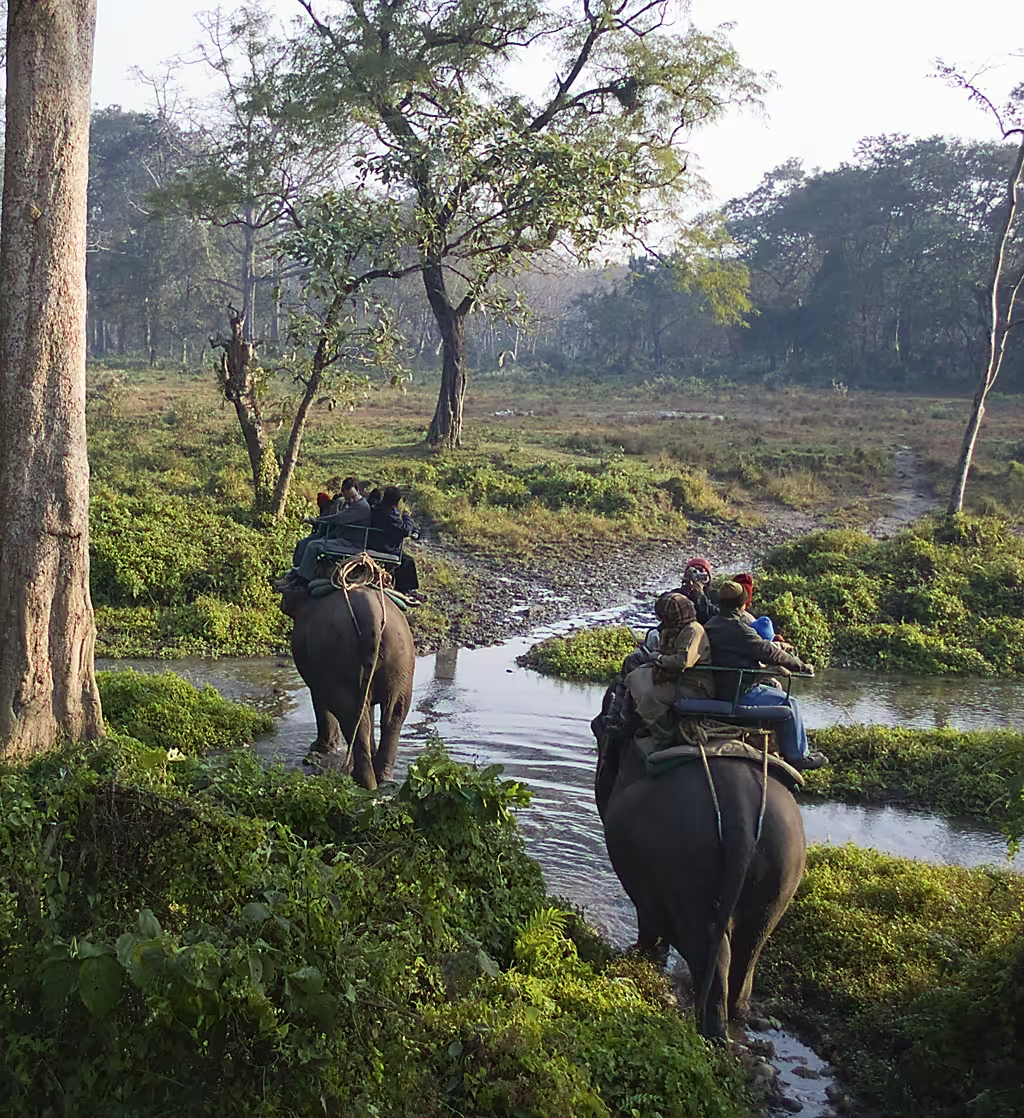Introduction
Contagious behaviors, like yawning, are fascinating phenomena that happen not just in humans but also in animals. These behaviors are usually triggered by seeing others do the same thing, creating a shared experience within a group. For example, when we see someone yawn, it’s common for us to yawn as well. While this is a well-known behavior in humans, the idea goes beyond just copying actions, suggesting there may be deeper social and evolutionary reasons behind it.
A recent study from Kyoto University has revealed an interesting case of contagious behavior in chimpanzees—contagious urination. Researchers noticed that chimpanzees when they saw another chimp urinate, would often urinate shortly after. This behavior raises new questions about the social bonds between animals and how such actions might help with communication and group unity.
So, is this just an odd behavior, or does it say something deeper about social connections and evolution?
What Are Contagious Behaviors?
Contagious behaviors are actions or reactions that occur in one individual after seeing another do the same thing, spreading within a group or community. These behaviors can range from simple imitation to more complex, synchronized actions, and they are seen across many animal species. Contagious behaviors are thought to help maintain social bonds and support group survival.
In humans, yawning is a well-known example of contagious behavior. When we see someone yawn, we often feel the urge to yawn too. This is believed to be connected to empathy and social bonding, as it happens more often between people who have close relationships. Animals also show similar contagious behaviors. For example, birds in a flock mimic each other’s calls, which helps them communicate and coordinate their movements. This is especially important for species like parrots and songbirds.
Another example of contagious behavior can be seen in schools of fish, where they often move in sync, such as turning together. These coordinated movements help the group in several ways, like avoiding predators or navigating together. Sometimes, these movements are so perfectly timed that it seems like the whole group is responding to the same stimulus at once.
Contagious behaviors are more than just interesting—they are vital in building social connections and supporting survival. In social animals, these behaviors can strengthen group unity, improve communication, and encourage cooperation. For humans, contagious yawning may help foster empathy and bonding, while in animals, synchronized actions can improve defence against threats or make hunting more efficient. In the end, these behaviors are not just quirky—they are deeply rooted in the evolutionary need for cooperation and staying connected as a group.

Page URL: https://commons.wikimedia.org/wiki/
Attribution: Chi King, CC BY 2.0 https://creativecommons.org/licenses/by/2.0, via Wikimedia Commons
The Study: Chimpanzees and Contagious Urination
A recent study by researchers at Kyoto University uncovered a surprising example of contagious behavior in chimpanzees: contagious urination. The researchers observed that chimpanzees in a natural setting were more likely to urinate after seeing another chimp do the same. This behavior was studied in a controlled environment, allowing the researchers to track and analyze the timing and frequency of urination among different chimpanzee groups.
The study’s key findings showed that chimpanzees were much more likely to urinate shortly after observing another chimp urinate. The behavior was especially noticeable among individuals with close social bonds within the group. In some cases, the chimpanzees urinated at the same time, suggesting that this behavior could have a social or communicative purpose.
The researchers proposed several theories about why this contagious urination might occur. One idea is that it could serve as a form of non-verbal communication, signaling territory or reinforcing social bonds within the group. Urination is commonly used by many animals to mark territory, and the shared act of urination might help chimpanzees solidify their place in the group or express affiliation with others. Another possibility is that environmental factors, such as certain smells or stimuli, could trigger a collective response among the chimpanzees.
Overall, the study raises interesting questions about the role of contagious behaviors in social animals. While behaviors like yawning or mimicking calls are often seen as ways to foster empathy or communication, contagious urination in chimpanzees suggests that such behaviors may also play a part in maintaining social cohesion and group dynamics. This research expands our understanding of how animals use seemingly unrelated behaviors to strengthen bonds and create harmony within their communities.
Evolutionary Significance of Contagious Behaviors
Contagious behaviors are believed to have evolved because they strengthen group dynamics, improve coordination, and ultimately help social animals survive and succeed. In species that live in groups, behaviors that promote unity and synchronization are essential for maintaining social structure and ensuring cooperation, both of which are critical for individual and group survival.
One major evolutionary advantage of contagious behaviors is the improvement of group coordination. For example, in predator-prey situations, synchronized movements or responses (like those seen in schools of fish or flocks of birds) enhance the group’s ability to avoid predators or catch prey. Contagious behaviors such as flying in unison or responding together to danger help the group act as a single unit, reducing confusion or chaos that could put individuals at risk. In social animals like chimpanzees, contagious behaviors like urination or grooming could serve a similar purpose, promoting social bonding, reinforcing social hierarchies, or marking territory. These behaviors might act as non-verbal communication, signaling group unity and helping individuals stay connected, boosting cooperation within the group.
The evolution of these behaviors is likely linked to the benefits of living in groups, especially in species that depend on complex social interactions for survival. In highly social animals like humans, chimpanzees, and dolphins, contagious behaviors may have evolved to strengthen social ties, promote empathy, and ensure that group members stay in sync. These behaviors might also serve to express emotions or signal trust and cooperation, building stronger social networks within groups.
Looking at contagious behaviors across different species, we see similar patterns, even though the specific behaviors may vary. For instance, contagious yawning, seen in humans and some primates, is believed to promote empathy and social bonding—key traits in species with complex social structures. Likewise, contagious vocalizations in birds and insects help synchronize group actions, such as migration or foraging, ensuring the group functions smoothly. These behaviors often appear in species that share high levels of sociality and interdependence, suggesting that contagious behaviors are deeply rooted in the evolutionary need for cooperation and social cohesion.
In short, contagious behaviors are an evolutionary adaptation that supports group survival. They help coordinate actions, strengthen social bonds, and facilitate communication within social groups. By enhancing group dynamics, these behaviors help social species thrive in environments where cooperation is essential. Studying behaviors like yawning or urination offers valuable insights into the evolutionary advantages of social living and how behaviors that might seem trivial at first can serve important functions in nature.
Implications for Understanding Primates (and Ourselves)
The discovery of contagious urination in chimpanzees provides valuable insights into primate cognition and emotions. It suggests that, like humans, chimpanzees are deeply aware of their social surroundings and engage in complex forms of communication, even through seemingly ordinary behaviors. This type of contagious behavior indicates that primates possess a high level of social awareness and emotional intelligence, allowing them to pick up on subtle cues from others. These behaviors help strengthen group cohesion and reinforce social bonds. The fact that chimpanzees might urinate after seeing another chimp do the same hints at a deeper sense of empathy or connection—an understanding of shared experiences within their social group.
This behavior also points to the complexity of primate emotional and cognitive states. It shows that chimpanzees, like humans, are capable of mirroring or empathizing with others’ actions. Whether through physical actions like yawning or behaviors such as urination, this mirroring is often seen as a form of social bonding and emotional connection. These shared behaviors are likely essential for maintaining harmony within the group and fostering a sense of unity and belonging. This is especially important in species with complex social structures, where cooperation and trust are key to survival.
When we look at human behavior, we can see how shared actions, even seemingly trivial ones, strengthen our social bonds. Humans often engage in behaviors such as laughing together, imitating gestures, or mirroring body language during conversations. These small actions serve to strengthen relationships, create a sense of belonging, and promote empathy. Similar to contagious yawning, which is thought to be linked to empathy, these behaviors allow us to connect with others emotionally and synchronize our actions. Whether it’s through a smile, a shared moment of laughter, or an unspoken understanding, these subtle behaviors help reinforce the social bonds that tie us together.
This raises important questions about what we can learn from observing animals, especially primates, to better understand ourselves. If chimpanzees and other primates display contagious behaviors related to social bonding, emotional connection, and communication, what does this say about the origins of human social behavior? Could these behaviors be early evolutionary steps leading to the complex social dynamics we have today? Studying these interactions in animals can give us insight into the shared evolutionary traits that shape our social lives, offering a glimpse into the cognitive and emotional processes that underlie our social nature.
In conclusion, studying contagious behaviors in primates not only sheds light on their social lives but also encourages us to reflect on the deep connections that link us to other species. The subtle, shared actions we see in both humans and animals highlight the importance of empathy, communication, and social cohesion. These behaviors remind us that, at our core, we are all interconnected through these universal patterns of connection.
Conclusion
Studying contagious behaviors, like the recent discovery of contagious urination in chimpanzees, helps us better understand both social dynamics and evolutionary processes. These behaviors show how animals, especially primates, navigate complex social environments and give us valuable insights into their emotional intelligence and communication methods, which strengthen their social bonds. By looking at subtle actions, such as yawning, mimicking calls, or synchronized movements, we can see how these behaviors promote cooperation and group unity. This helps us appreciate the intricate ways social species, including humans, interact and thrive.
This discovery raises the question: What other subtle behaviors might connect us more deeply with animals than we realize? From simple gestures to shared moments of empathy, there could be many unnoticed behaviors in both animals and humans that highlight our shared evolutionary history and social needs.
I encourage readers to observe and appreciate the social behaviors of animals, whether in the wild or domestic settings and consider the surprising parallels to our actions. These behaviors are not just fascinating—they remind us of our deep-rooted connections with the animal world and the evolutionary forces that shape our social lives. Understanding these connections can help us cultivate empathy, strengthen social bonds, and develop a deeper appreciation for the complexity of life across species.
Share the knowledge with

